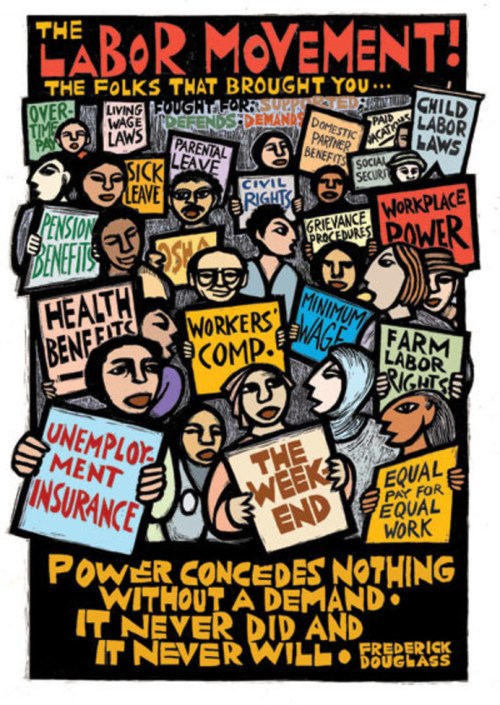The Power of the Collective
Labor Movements Are Spreading Nationwide

As we head into the holiday weekend we hope you will take time to reflect on the meaning and history of Labor Day, and why its importance is heightened at a time when we are seeing a resurgence of widespread collective action aimed at combating staggering wage and wealth inequality and injustice.
Labor Day was established as a national holiday in 1894 at the behest of labor activists who pushed for a federal holiday to honor and recognize the American Labor Movement and the many contributions of the worker. Over time it seems that the conventional meaning of the holiday has been hollowed out to the extent that the general population more so observes the day as a marker for the changing of the seasons, and in this age of consumerism, “Labor Day Sales” dominate the weekend.
Shamefully, many of the workers that the COVID-19 pandemic uplifted as essential — the service industry, health-care workers, domestic workers, and farmworkers — do not get Labor Day off. The irony is brutal.
In the first quarter of 2023, 69 percent of the total wealth in the United States was owned by the top 10 percent of earners. By comparison, the lowest 50 percent of earners only owned 2.4 percent of the total wealth (Statista Research Department, via Federal Reserve). The impact of this disparity ripples into every aspect of life creating a quality of life divide that is being referred to as the second Gilded Age.
Yet it feels like something is beginning to shift in the wake of the COVID-19 pandemic — a renewed understanding and recognition that collectively we hold the power to create change. Labor movements are spreading nationwide. According to data from the Cornell University School of Industrial Labor Relations, as of August of this year, more than 320,000 workers in the United States have participated in at least 230 strikes — up from 224,000 workers in all of 2022.
The span of the strikes has been wide and diverse, from educators and delivery service workers to hospitality workers, airline workers, rail workers and health-care workers, among others. Striking Hollywood writers and actors have brought the entertainment industry’s production to a halt. Well-known companies like Starbucks and Amazon have begun to unionize (despite aggressive union-busting efforts) contributing to a shift in public opinion. Gallup reports that in 2022, 71 percent of Americans approved of labor unions, the highest show of support since 1965.
At The Fund we stand in solidarity with workers across all industries who are fighting for economic justice, a living wage, dignity, and respect. We hold reverence for the activists and organizers that laid the foundation for securing the workplace protections that are in place today, and also acknowledge that there is more work to be done. We are decisively pro-union as we understand the power of collective bargaining and action to be transformative.
Over the last year, The Fund has worked in collaboration with research leaders at UC Santa Barbara and union leaders of the Central Coast Labor Council to successfully establish the region’s first labor center at UCSB, an institution that will serve as a tremendous resource to labor organizing campaigns in our region.
We believe that the times we are living through are paving the way for a more just and equitable future — but also understand that in order to get there, intersectional solidarity is necessary. So this Labor Day weekend, we ask that you hold space and show support for the struggle of working folks and the many who are currently undertaking campaigns for fair wages, healthy working conditions, dignity, and respect.
Marcos Vargas is executive director and Alina Rey Keswani is development and communications manager of the Fund for Santa Barbara.




You must be logged in to post a comment.